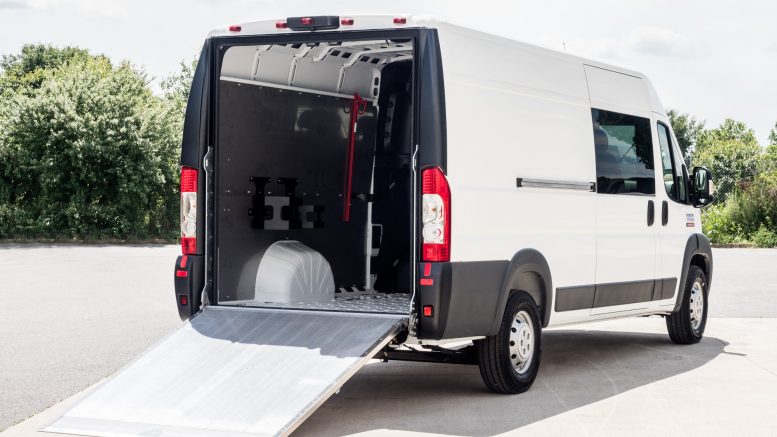It happens every day. A worker goes to the rear of a van to load or unload a package, tools or other heavy items and without warning an injury happens. In fact, one of the most hazardous activities for workers other than driving is loading or unloading cargo. According to the National Highway Transportation Safety Association (NHTSA), more than 66,000 injuries occur each year due to overexertion while unloading cargo. And that figure doesn’t even cover back or neck injuries, arm injuries or shoulder injuries.
Statistics show that injuries don’t only occur when delivering packages or goods, but happen to almost any worker that is loading or unloading heavy items at a warehouse, a customer location or a job site. The problem is mostly due to some cargo vans that are too low or too narrow, requiring the worker to duck, twist, bend and turn in a variety of awkward positions in order to load or remove items.
High roof conversion vans can help reduce injuries
Imagine what it would be like if a worker could arrive at a job site, open the back of a cargo van and enter standing completely upright. No bending, twisting or turning to access packages or tools. No need to make unloading items a multiple-step process. Instead, the worker simply exits the van down an inlay ramp lift gate, using a dolly or hand truck to unload the items.
Also, commercial vans can be upfit for almost any purpose or configuration. Want built in shelves or storage bins? You’ve got them. Need a heavy-duty ramp and lift gate for cargo that weighs up to 2,000 pounds? It’s available! Just as no two businesses are the same, no two vans have to be the same either.
Depending on the model purchased, commercial conversion vans can be ordered with a high roof that enables workers to stand up and walk around inside the van. Buyers can customize their floor configurations with different roof height options, van lengths, and two different wheelbase options.
One company – FR Conversions, offers an exclusive crew-cab for transporting additional workers and a wide spring-assisted inlay rear ramp with a 2,000-pound capacity for loading and loading the bulkiest cargo or gear more easily than ever before. They also offer an optional stainless steel or galvalume interior walls with mounting points for all types of equipment. It’s designed to meet the needs of any commercial business, from plumbers to caterers to HVAC installers to general contractors. Most importantly, it’s designed to help keep workers safe.
Safety first
Reducing injuries for workers who load and unload cargo vans is a priority for every company. In the interest of safety, here are some tips that will help keep workers safe:
- When it comes to loading areas, brighter is better. Make sure the area is well lit, with no other vehicle traffic or people in the immediate area.
- Make sure that the loading area is on solid ground, with no obstacles or potholes that can cause a worker to trip or fall.
- Before loading a van, make sure that it is parked on a stable area with the parking brake applied.
- Loose materials like wires, cables and wrapping items can easily cause an injury, so clear off all debris and materials prior to loading.
- Tie-downs are a lifesaver for securing cargo. The rule of thumb is one tie-down for each 10-feet of cargo; but for added safety it’s better to use two regardless of the length of cargo.
- Binders help secure loads like pipes and logs. It’s recommended that you use a minimum of four binders for all loads that are 27 feet in length, ensuring that there is equal spacing between them.
- Employee training on the proper way to load and unload cargo can help to significantly reduce all types of injuries, and should be an ongoing process.
By proactively finding ways to prevent injuries and promoting safety, you’ll be able to reduce workers’ injuries while keeping your business operation thriving.



Be the first to comment on "Reducing Worker Injuries While Loading and Unloading Cargo"